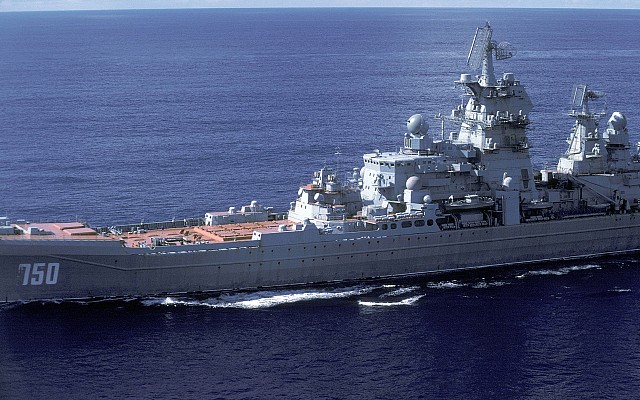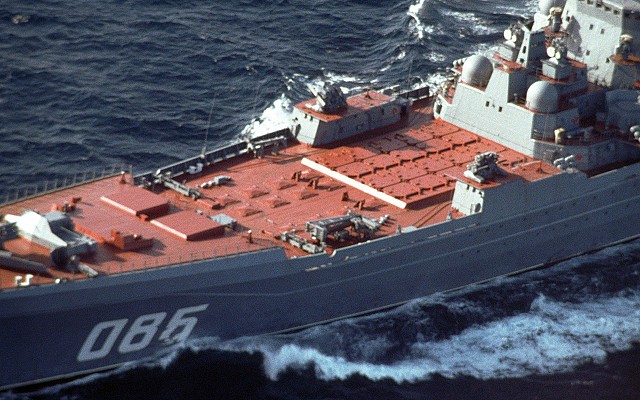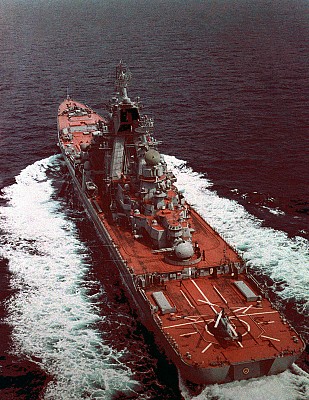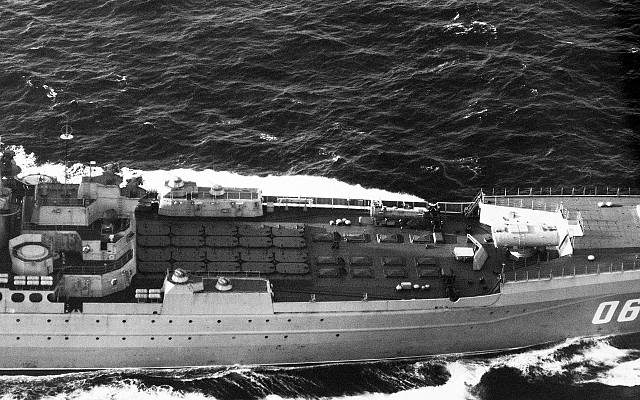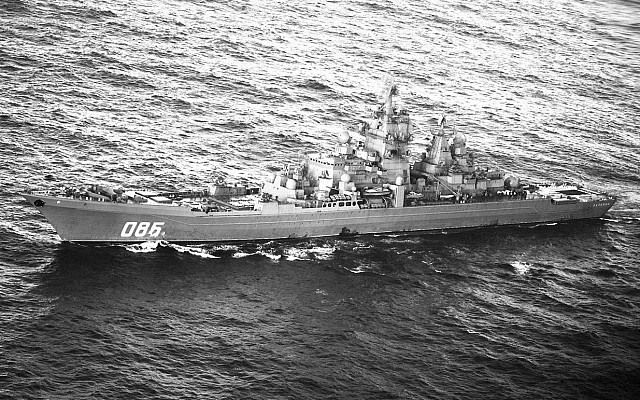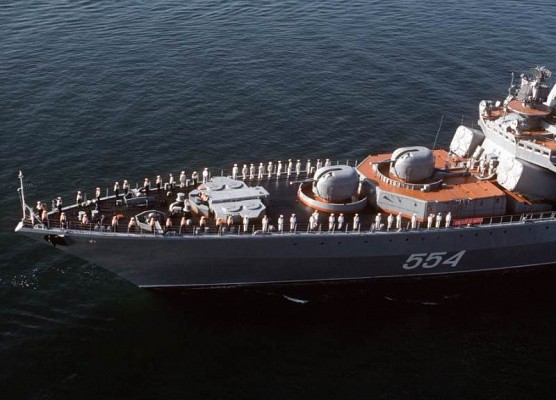Project 1144 Orlan class
NATO: Kirov class
Overview
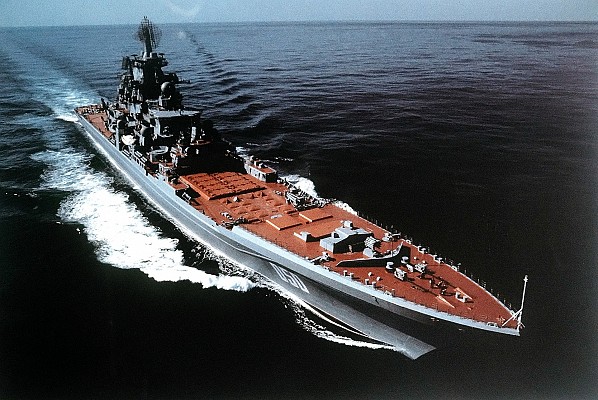
Project 1144 Orlan class
Soviet navy Project 1144 Orlan class cruiser Frunze (renamed Admiral Lazarev in 1992) seen at sea in 1986.
Source: US DoD -
© Public domain
Russia - Baltiysky Zavod, St. Petersburg
Orlan
Russian for "sea eagle"
Russia
Description
Introduction
The Project 1144 Orlan is a late Cold War era class of cruiser of Soviet origin. The name Kirov is the Western designation for the Project 1144 Orlan (Sea Eagle). This is the largest class of missile cruiser ever developed. This was due to ever increasing demands for armament and sensors for all domains: surface warfare, aera air defense and anti-submarine warfare. In Russia this type of ship is referred to as a heavy nuclear powered missile cruiser. Due to its size and displacement the Project 1144 class is sometimes referred to as a battlecruiser.
Design
The Kirov class was the first Russian nuclear power surface warship. The size and displacement are enormous. Unlike World War 2 era cruisers large guns do not make up the main armament. The Kirov class is a cruiser riddled with various kinds of missiles. The majority of the missiles are mounted at the front deck. The forward superstructure houses the bridge, funnel, main mast and many sensors and systems. The rear superstructure has a smaller mast and various other sensors. The hangar and helicopter deck are at the rear. Uniquely some internal compartments feature armor plating, ranging from 35 mm to 80 mm thickness.
Sensors
The main mast houses the huge MR-800 Voskhod (NATO: Top Pair) long range 3D air search radar system with a range up to 200 nm. The rear mast houses the large MR-750 Fregat-M (NATO: Top Plate) 3D air and surface search radar. Additionally a wide variety of fire control radars and optronic systems are fitted for the various SAM systems and guns. Sonar includes a very powerful hull mounted low frequency sonar used in conjunction with a towed array sonar. Countermeasures include two chaff launchers, a towed torpedo decoy and various ESM and ECM systems.
Firepower
Each of the four Project 1144 Orlan cruisers features a similar yet distinct armament suite as newer weapon systems became available during construction. The main armament are the 20 P-700 Granit (NATO: SS-N-19 Shipwreck) long range supersonic sea skimming anti-ship missiles. Additionally a single 130mm AK-130 twin gun turret can be used against surface targets. The capable air defense systems include 12 vertical launcher systems for the long range S-300F Fort (NATO: SA-N-6) surface to air missiles. Short range air defense comprises of either Osa (NATO: SA-N-4) or Kinzhal (NATO: SA-N-11) SAM systems. Eight AK-630 or six Kortik close-in weapon systems are fitted. The various anti-submarine and torpedo defense systems include a long range UDAV-1 and two smaller RBU-1000 mortar systems. Two quintuple 533mm torpedo tubes can launch SET-65 ASW torpedoes and Vodopad-NK torpedo carrying missiles. The three Ka-27 helicopters can also be used for anti-submarine warfare.
Mobility
The Project 1144 Orlan cruisers use a combined nuclear and steam propulsion to power two shafts. The main power supply consists of two KN-3 nuclear reactors. Additionally there are two oil fired boilers and two gas turbines. This combination of propulsion systems provides a superheat capability with increased power. The maximum speed is 30 knots and its range is 14.000 nm at 30 knots.
Users
Five Project 1144 Orlan cruisers were planned, with only four completed over a protracted design and construction phase that spans nearly three decades. The exact costs of these cruiser are unknown, but cannot be cost effective. Nonetheless, these cruisers are impressive and feature a potent range of armament. Currently the first two of this class are decommissioned and laid up for scrapping. The third ship in class was mothballed in 1999 and is being modernized since 2015 for re-entering service in 2024 or beyond. The fourth ship is now the only active vessel of this class.
Variants
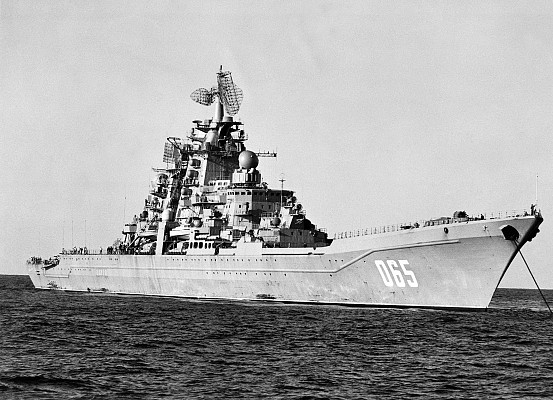
1st in class: Admiral Ushakov
The Admiral Ushakov (named Kirov until 1992) was the first in class and was commissioned in 1980. This hull is unique as it is the only ship in class to be built to the original Project 1144 design. Clear external differences include the two single 100mm AK-100 dual purpose guns at the rear and MS-82 twin tube launcher with Metel anti-submarine warfare missiles on the bow.
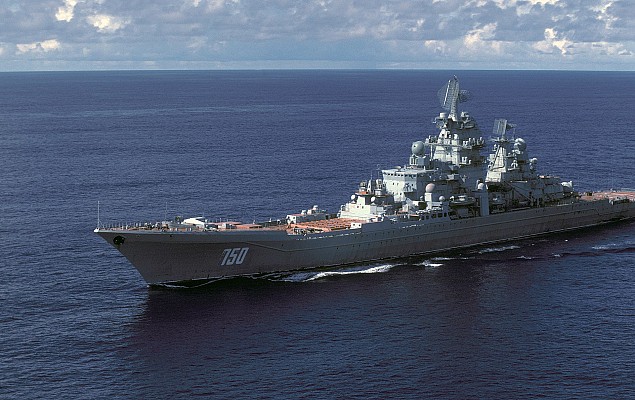
2nd in class: Admiral Lazarev
The Admiral Lazarev (named Frunze until 1992) was the second in class and was commissioned in 1984. This is the first ship in class built to the improved Project 1144.2 design. This is a transitional design that replaced the two 100mm gun turrets with a single twin barrel 130mm AK-130. The Metel on the bow was removed, with Vodopad-NK to be launched from the torpedo tubes. It still retains the older AK-630 CIWS, Osa-M point defense SAM and RBU-6000 ASW launcher.
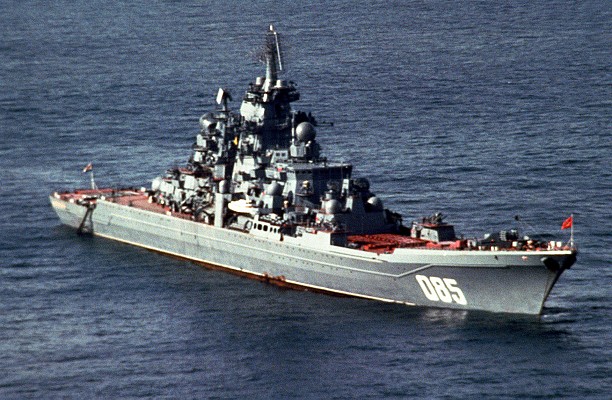
3rd in class: Admiral Nakhimov
The Admiral Nakhimov (named Kalinin until 1992) is the third ship in class and was commissioned in 1988. Although built to the same Project 1144.2 class it featured and improved MR-750 Fregat-MA radar, UDAV-1 anti-torpedo system and Osa-MA point defense SAM system. Reportedly Kinzhal was installed in the 1990's. Nakhimov was mothballed in 1999 due to the excessive operating costs. Deep modernization started in 2015 with intended service date slipping to 2024 and likely to be postponed further.
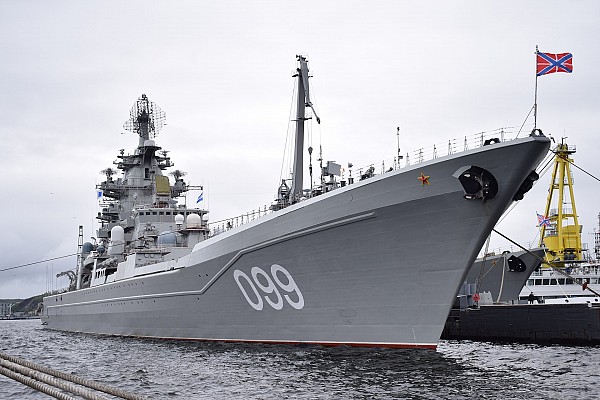
4th in class: Pyotr Velikiy
The Pyotr Velikiy (named Yuri Andropov when laid down) is the fourth ship in class. Commissioned in 1998 this is the only ship in this class that is currently operational. It features the same updates ad the Nakhimov, but the obsolete Osa system was never installed. Air defense was updated by fitting a 30N6 fire control radar and updating some of the vertical launch systems to hold the physically longer and longer range 48N6 surface to air missiles.
Details
Media
Subcomponents

P-700 Granit
20x P-700 Granit (NATO: SS-N-19 Shipwreck) supersonic anti-ship missile. On all ships in class.
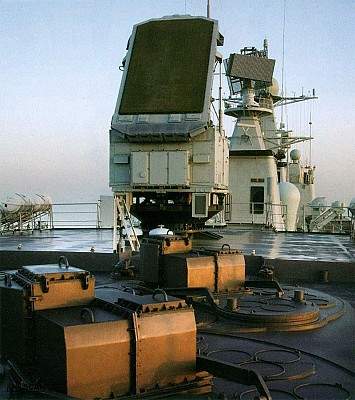
S-300FM Fort-M
1x S-300FM Fort-M replacing a S-300F on third ship in class.
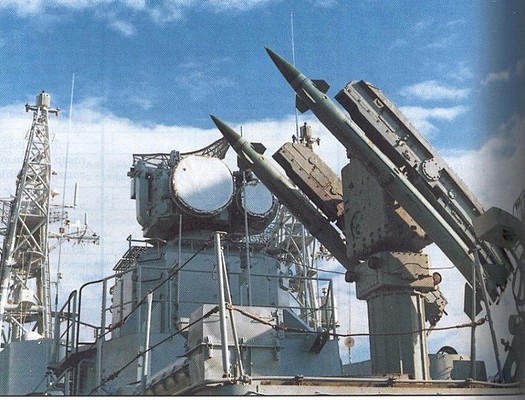
M-4 Osa-M
2x M-4 Osa-M or Osa-MA point defense SAM system. On first 3 ships in class.
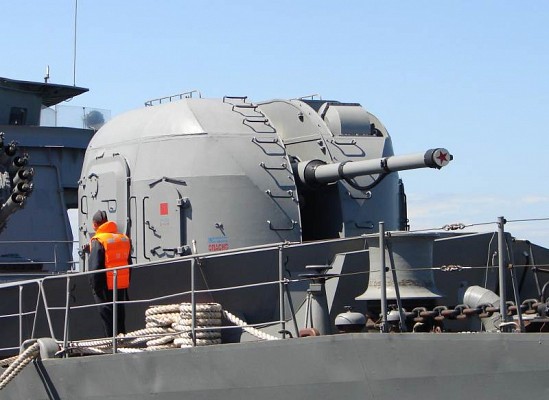
100mm AK-100
2x1 100mm AK-100 dual purpose gun, only on lead ship in class.
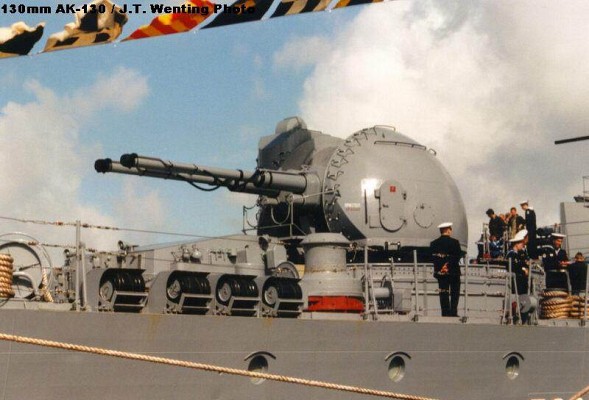
130mm AK-130
1x2 130mm AK-130 dual purpose gun. On all but first of class.
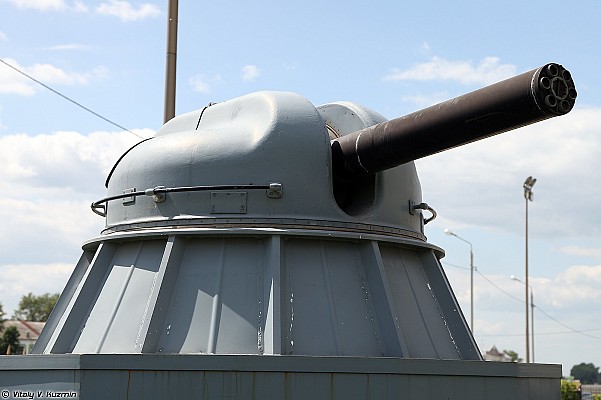
30mm AK-630
8x 30mm AK-630 close-in weapon system. On first two ships in class.
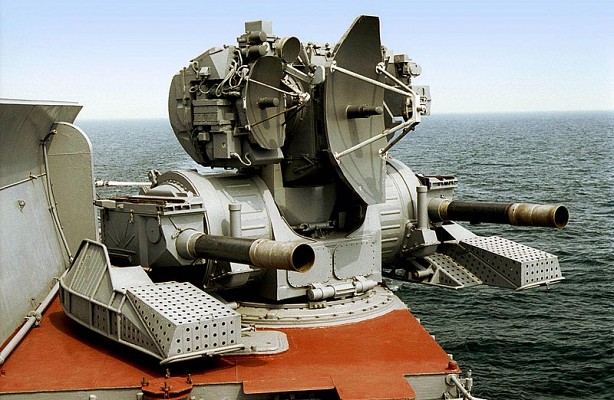
30mm Kortik
6x 30mm Kortik close-in weapon system. On last two ships in class.
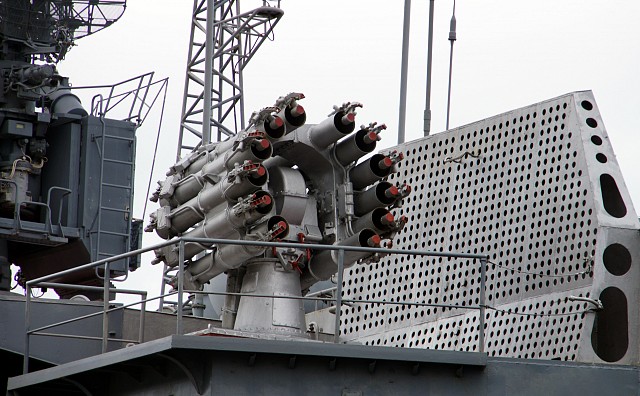
RBU-6000 Smerch-2
1x 12-barrel RBU-6000 depth charge launcher. On first two ships in class.
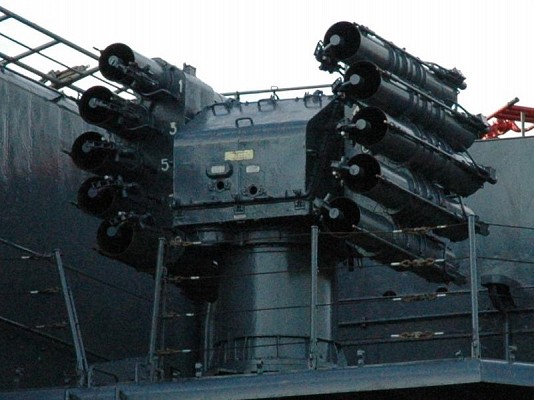
UDAV-1
1x 10-barrel UDAV-1 anti-torpedo depth charge launcher. On last two ships in class.
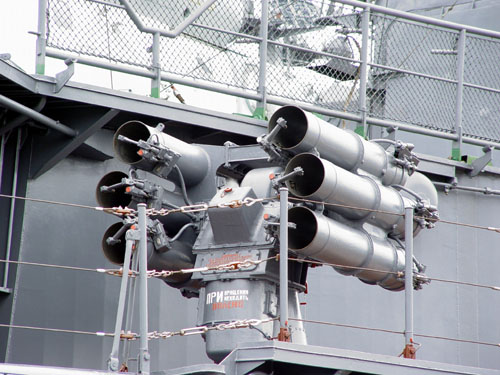
RBU-1000 Smerch-3
2x 6-barrel RBU-1000 depth charge launcher. On all ships in class.
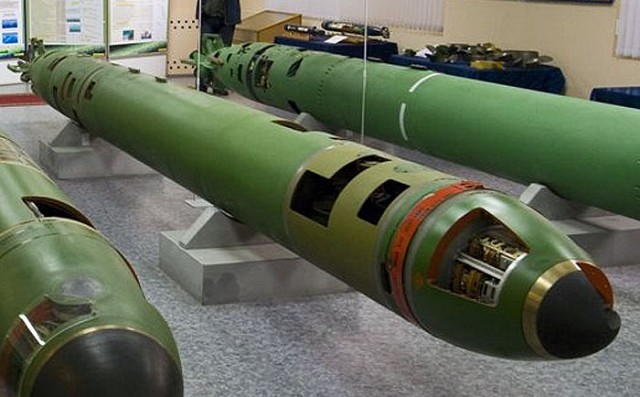
SET-65
2x5 PTA-53-1144 quintuple 533mm torpedo launchers. With SET-65 and RPK-6 Vodopad-NK anti-submarine torpedoes. On all ships in class.
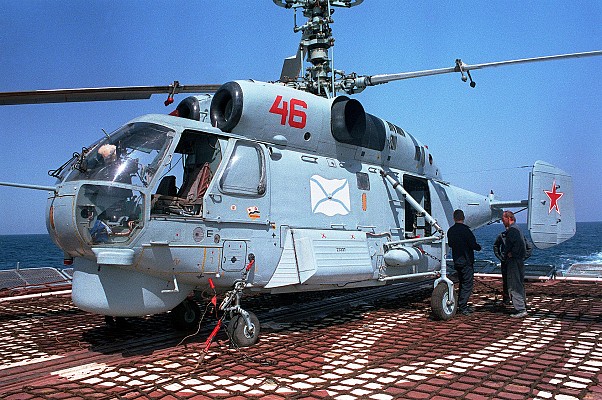
Kamov Ka-27PL
Three Ka-25 or two Ka-27 naval helicopters can be carried. The Ka-27PL is intended for anti-submarine warfare.
Related articles
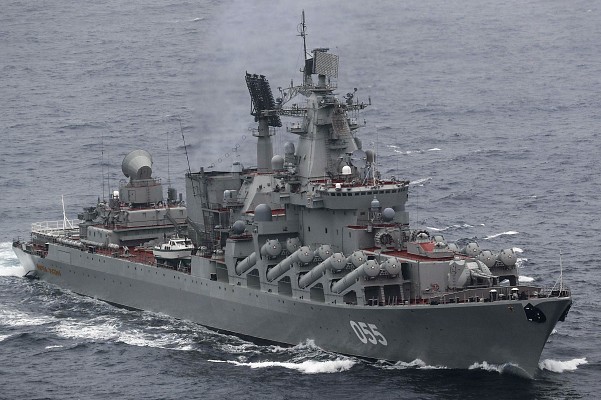
Project 1164 Atlant class
The Project 1164 Atlant (NATO: Slava) class cruiser was developed concurrently with the Project 1144 Orlan class as a less challenging and more affordable fall back option.
Ticonderoga class
Contemporary American class of cruisers, which are more conventional and much smaller in design. Yet are more potent in the aera air defense role.
